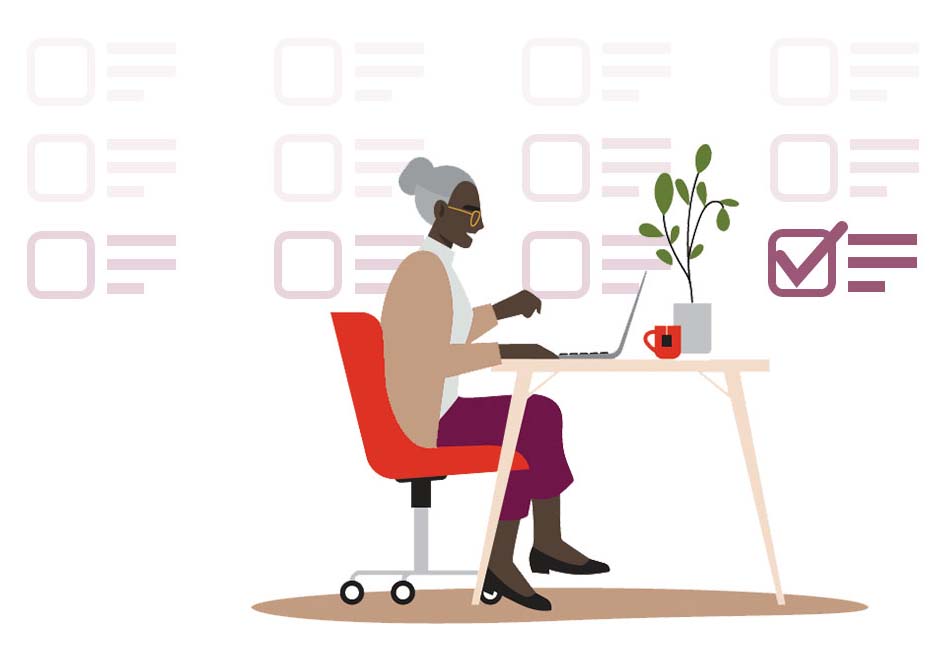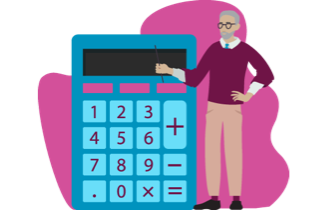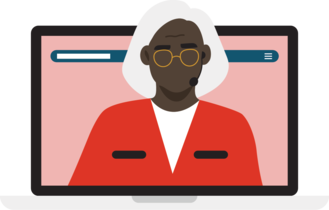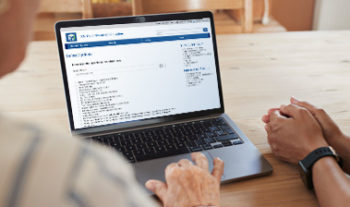Student loan payments have resumed as of October 1, 2023. Borrowers with FFEL or Perkins Loans can benefit from the Department of Education’s one-time account adjustment and get more credits towards loan forgiveness. Consolidate multiple loans and access more IDR plans before April 30, 2024. Sign up to start your IDR application, or watch our webinars to learn more.

Take Control of Your Student Debt
AARP Foundation has partnered with Savi to provide resources, support, and a tool to help you understand your student loan situation and achieve a lower monthly payment. Get started now!
Watch Our Webinars to Better Understand Your Student Loans
In partnership with Savi and various student loan experts, AARP Foundation hosts webinars on the topics of:
- How to lower your monthly payments
- Basics of federal student loans and income-driven repayment plans
- Public service loan forgiveness
- Options for PLUS borrowers
- Conversations with student loan experts
High Monthly Payments Weighing You Down?
Here’s How to Take Back Control
Here’s How to Take Back Control

Exploring Options to Reduce Your Monthly Payments?
Apply for an IDR through our partner Savi and work toward receiving loan forgiveness

Want to Speak to an Expert to Learn More About Your Options?
Create a Savi account today, and receive free student loan counseling!
Reduce Your Monthly Payment in 4 Simple Steps
Quickly determine whether you’re eligible for federal programs through the U.S. Department of Education — programs that can lower or eliminate your monthly payments based on your income and household size for an average saving of $156 a month!

Create a Profile
Provide your information to get started

Gather Your Information
Enter your income, most recent taxes, and student loan information

Choose a Repayment Plan
Compare your monthly repayment options all together to know what’s best

Reduce Your Monthly Payment
Savi will take care of your paperwork with your loan servicer and automatically recertify every year
Frequently Asked Questions About Savi
What do I need to get started with Savi?
It takes about 30 minutes to answer some questions and get your recommendations. Before you begin, you’ll need to have:
- Your Social Security number
- The first page of your most recent tax return or tax transcript so you know your filing status, adjusted gross income (AGI), and wages.
- The username and passwords you use to log in and pay any of your student loan servicers (e.g., Navient, Nelnet, Great Lakes). Savi will use these to automatically import your student loan information. You can also choose to manually enter your loan details — the loan type(s), original principal borrowed, your interest rate(s), the year(s) you started repaying, and your monthly payment amounts.
What are income-driven repayment plans?
An income-driven repayment (IDR) plan can lower your monthly payments based on how much you earn versus the total loan amount. These plans are available to make monthly payments more affordable for people with federal student loans. If you’re out of work, or if your income is low enough, your payments could be as little as $0.
There are four common income-driven plans:
- Revised Pay As You Earn (REPAYE)
- Pay As You Earn (PAYE)
- Income-Based Repayment (IBR)
- Income-Contingent Repayment (ICR)
Each plan has different eligibility criteria based on the types of loans you hold and when you took out the loans. Your payment amounts are based on 10-20% of your discretionary income, depending on which plan you are eligible for and enrolled in. The U.S. Department of Education defines this as your after-tax income minus the poverty guidelines for your family size.
The Savi tool identifies all of the best loan repayment options available to you and provides you with the information you need in order to make an informed decision.
Learn more about loan repayment options.
What if my loans are in default? Can ‘Fresh Start’ program help?
Fresh Start is a one-time temporary program from the U.S. Department of Education (ED) that offers special benefits for borrowers with defaulted federal student loans. If you’re in default, the Department of Education’s new Fresh Start program can help restore your credit report, end collections, and restore your eligibility to enroll in an income-driven repayment plan.
Call the Default Resolution Group at 1-800-621-3115. If you are deaf or hard of hearing, the TTY number is 1-877-825-9923. You can also call this number if they do not know whether your loan is held by the Default Resolution Group or a Guaranty Agency.
Is Savi free?
Savi’s DIY (Do-It-Yourself) Plan is available at no cost. If you are over 50 and meet the income guidelines outlined below, AARP Foundation will cover the cost of the Essential Plan — which includes ongoing support from Savi’s customer service team — so you can access that option for free.
ESSENTIAL$90.00 Fee Waived for Eligible Individuals* |
DIYEnroll on Your Own No Cost |
|---|---|
|
Simplified, step-by-step process for inputting information and e-filing paperwork Takes about 30 minutes to complete Ongoing support from Savi’s dedicated customer service team Savi’s sign-up fee waived by AARP Foundation for eligible individuals |
Complete, print, and mail or fax your own paperwork Takes 1-2 hours to complete Access your Savi account at any time No cost regardless of income |
*AARP Foundation pays for the Savi Essential Plan for any borrower who qualifies by age and income per the household chart
| Household Size | Monthly Income | Annual Income |
|---|---|---|
| 1 | $2,683 | $32,200 |
| 2 | $3,629 | $43,550 |
| 3 | $4,575 | $54,900 |
| 4 | $5,521 | $66,250 |
| 5 | $6,467 | $77,600 |
Based on 2021 Income Guidelines
If I use Savi, will Savi become my loan servicer?
No. Savi is not a loan servicer, and you will never pay Savi to make your monthly payments. Our goal is to help you find the best repayment option and file paperwork with your loan servicer, but Savi will never maintain or hold your loans in any manner.
What is Public Service Loan Forgiveness (PSLF)?
The Public Service Loan Forgiveness (PSLF) program forgives the remaining balance of eligible federal student loans after a borrower has made 120 qualifying payments (about 10 years’ worth) while the borrower is working full-time with a qualifying public service or nonprofit employer.
The Savi tool is up to date on the new changes to help you learn whether you qualify.
Learn more about Public Service Loan Forgiveness.
When did student loan payments resume?
The COVID-19 Payment Pause ended on September 1, 2023. This means that in September borrowers got their first student loan bills in nearly three years. The first bills were due in October 2023 unless notified otherwise.




